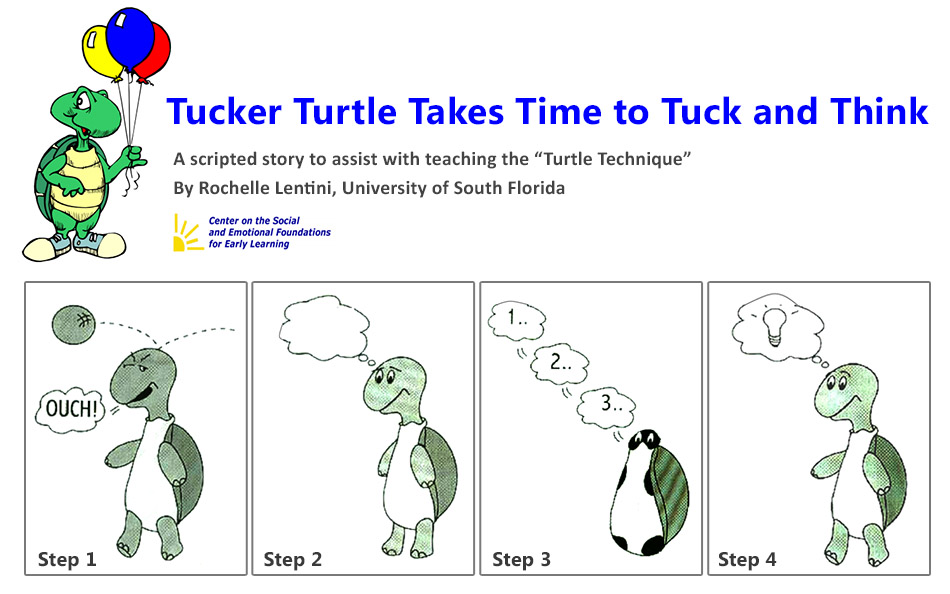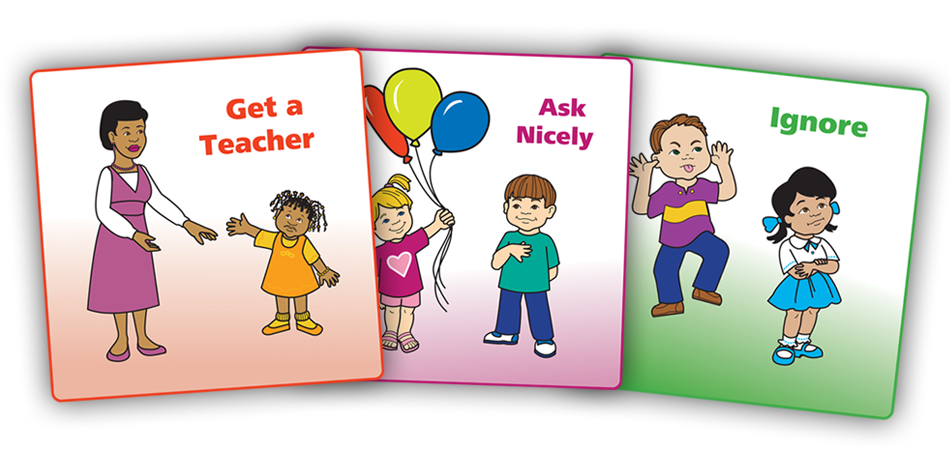- State why social and emotional competence is a protective factor that prevents abuse and neglect.
- Identify strategies to promote social and emotional competence in children.
- Use strategies that promote social and emotional competence in all children.
Learn
Know
As a family child care provider, supporting social and emotional competence is a major part of your job. Appropriately, you will spend the bulk of your time with children promoting positive interactions, helping solve problems, and responding to intense emotions. You are promoting positive social and emotional skills in every interaction you have with a child. Evidence suggests that social-emotional competence contributes significantly to skills in other domains, like cognitive development and physical development. Researchers at the Center for the Study of Social Policy found an additional benefit of such an emphasis on social and emotional competence: It decreased the amount of child abuse and neglect in families. Parents with children in exemplary programs reported that the skills their children learned that related to anger management and violence prevention directly affected the way parents and children interacted. When children expressed their emotions appropriately, parents began to see their children differently.
While these findings might seem more relevant to preschoolers and older children, you begin this important work with infants and toddlers as well. You can have a large impact on how parents and children interact. Families notice the way you interact with children: how you soothe an infant, how you help calm a dispute over a toy, how you respond to tantrums or when a school-age child talks back. Your relationships can become a model for families.
Also, emphasis on strong social-emotional competence benefits children’s lives in child care settings. Children who are socially skilled are more likely to advocate for themselves, ask another adult for help, express their needs, feelings, and interests appropriately and clearly, and connect with others. When children are able to clearly express their needs and wishes, we are better able to understand how to meet their needs. Adults also have an easier time caring for children who are able to listen and follow directions, follow the routine of the program, solve problems, and ask for help rather than engaging in problem behavior. Social and emotional competence also leads to more positive adult-child relationships and more positive peer relationships. It is through these positive relationships that children learn best.
What does this have to do with preventing child abuse and neglect in family child care settings? The answer is simple: when you see each interaction as an opportunity to build a positive relationship, you are more likely to view children positively. You are more likely to see behaviors as communication:
- The crying infant is saying, “Comfort me.”
- The 9-month-old trying to climb the shelves is saying, “Help me explore.”
- The toddler running around the room is saying, “Play with me.”
- The 4-year-old who is “tattling” on another child is saying, “We need your help.”
- The 3-year-old who is climbing up the slide is saying, “Help me learn to use this.”
- The 9-year-old who tells you long stories about his favorite video game is saying, “Please pay attention to me.”
- The 11-year-old who throws a soccer ball over the fence after missing a goal is saying, “I’m frustrated.”
Viewing behaviors as communication makes you less likely to become frustrated or overwhelmed. You are more likely to make good decisions about responding to behaviors that challenge you. These decisions help strengthen your relationships with children, and these relationships prevent child abuse and neglect in your program.
What is Social and Emotional Competence?
Social and emotional competence is the ability to interact with others, regulate one’s own emotions and behavior, solve problems, and communicate effectively. Children who are socially and emotionally competent according to the Center for the Study of Social Policy (2013) have:
- Healthy self-esteem
- Self-confidence
- Self-efficacy (belief in their ability to do things)
- Self-control
- Personal agency
- Patience
- Persistence
- Conflict-resolution skills
- Communication skills
- Empathy
- Social skills
- Morality
For infants and toddlers, we cannot expect these very young children to have these abilities just yet; they are still learning and developing the skills they need to connect with others. Rather, it is better to think about social-emotional development for infants and toddlers. Consider this definition from the Center on the Social and Emotional Foundations for Early Learning (CSEFEL; www.vanderbilt.edu/csefel):
The term social-emotional development refers to the developing capacity of the child from birth through five years of age to form close and secure adult and peer relationships; experience, regulate, and express emotions in socially and culturally appropriate ways; and explore the environment and learn—all in the context of family, community, and culture.
Caregivers promote healthy development by working to support social-emotional wellness in all young children, and make every effort to prevent the occurrence or escalation of social-emotional problems in children at risk, identifying and working to remediate problems that surface, and, when necessary, referring children and their families to appropriate services.
(Adapted with permission from ZERO to THREEʼs definition of infant mental health, 2001.)
There is strong research evidence that social and emotional development contributes to development across domains: cognitive, physical, communication (Copple & Bredekamp, 2009; National Scientific Council on the Developing Child, 2008; Raver & Knitzer, 2002; Smith, 2010; Zins, Bloodworth, Weissberg, & Wahlberg, 2004). In many ways, social and emotional competence opens the door to richer and deeper learning. In early childhood, we understand that relationships are the foundation of all learning, so it makes sense that having strong relationships helps children learn.
Social and emotional competence begins to develop even in infancy. During the first six months of life, infants learn how caregivers (parents and other adults) will respond to their needs. This is known as attachment. Attachment relationships are those relationships that help a young child feel safe and protected—especially when they are ill or scared. All young children become attached to caregivers, but there are different qualities of attachment. The quality of attachment depends on how adults respond. Adults who respond quickly and lovingly to a crying infant or a stressed preschooler build secure attachment relationships. Adults who ignore crying or respond negatively to children’s strong emotions build insecure attachment relationships.
Secure attachment sets the stage for later social and emotional growth. A securely attached infant knows an adult will comfort her or him in times of distress. After a year, securely attached infants cry less, are better able to soothe themselves, and respond more quickly to a soothing caregiver (Benoit, 2004). As we respond to young children’s needs, they learn that they are effective communicators. They learn the back and forth of conversations and interactions. This has a large impact on a child’s social development from infancy through adolescence.
There are several key ways programs can promote social and emotional competence in infants, toddlers, and young children, including: fostering nurturing and responsive relationships, creating supportive environments and routines, teaching or helping children learn to recognize and deal with emotions, and teaching or helping children learn to recognize and solve social problems (CSEFEL, 2008).
You can learn a great deal about each of these strategies by visiting the National Center for Pyramid Model Innovations (NCPMI) website which merged with CSEFEL and Technical Assistance Center on Social Emotional Intervention (TACSEI). The NCPMI website is provided in the References & Resources section at the end of this lesson. You will also learn more in the Positive Guidance and Social & Emotional Development courses. Below is a brief introduction to these three concepts.
Nurturing and Responsive Relationships
- Provide physical and emotional security for each child
- Develop meaningful relationships
- Apply knowledge of children’s individual temperaments to interactions and practice
- Engage in ongoing observation and reflection about children’s social and emotional learning
Creating Supportive Environments and Routines
- Design responsive environments that promote social and emotional competence
- Design responsive routines and schedules that promote social and emotional competence
- Ensure smooth transitions
- Individualize plans and curriculum to promote social-emotional competence
- Use age-appropriate expectations to guide children’s behavior
- Support families to develop home environments and routines that promote social-emotional competence
Supporting Emotional Literacy
Emotional literacy is the ability to recognize emotions in yourself and others. It’s also the ability to express and regulate emotions. Programs that promote emotional literacy talk about emotions throughout the day every day. Adults label their own emotions and children’s emotions. They read stories about emotions. They help children recognize emotions in themselves and others. Providers also provide concrete strategies to help children address and express their emotions appropriately. For example, in some programs, preschool-aged children are taught the “Turtle Technique” to help them stop and think when they are angry.

Another way providers can support emotional literacy is by continuing to assist in children’s development of empathy. Empathy is the ability to take on another person’s perspective. You can do this by describing your own emotions and the emotions of children in your program. Begin by asking children to think about how they would feel in certain situations. Encourage opportunities for reflection, critical thinking, and compassion. While young children may not fully understand the concept, teaching empathy can begin early. People who understand the emotions of others are less likely to act aggressively toward one another. This means that teaching children empathy can help prevent aggressive behavior in your program. Teaching empathy also brings awareness to your own mental and emotional health, which can help prevent child abuse and neglect in your program. Through repeated exposure at young ages children can begin to develop skill in empathetic perspective taking and strengthen emotional literacy. Learn more about the difference between empathy and sympathy here: https://www.youtube.com/watch?v=1Evwgu369Jw.
Developing Problem-Solving Skills
All of us experience problems. Our success lies in how we deal with those problems. The skill of successfully navigating complex social situations does not necessarily come naturally. In programs that foster social and emotional competence, children are taught specific strategies for solving social problems, like how to share a toy or respond when someone says, “You can’t play with us.” They may learn to recognize they have a problem, think of solutions, consider what would happen, and give it a try. Adults may also help children generate solutions to try. Children are encouraged to be active participants in brainstorming and testing out solutions.

Supporting Friendship Skills
Learning how to make and keep friends is a lifelong skill. There are a variety of skills that are considered friendship skills. These include:
- Asking to join others in play
- Offering ideas and suggestions
- Sharing
- Taking turns
- Giving compliments
- Knowing how and when to apologize
In family child care programs that foster social and emotional competence, providers look for opportunities to promote friendship skills. They encourage friendly behavior, model friendly behavior, and set up opportunities for children to practice friendship skills.
To learn more about specific ways you can use these strategies to promote social and emotional competence, watch the following video from the National Center for Pyramid Model Innovations' (NCPMI) website: https://challengingbehavior.org/document/promoting-social-emotional-competence/
See
What do programs that promote social and emotional competence look like? Watch this video to find out.
Facilitating Social Development for Preschoolers
Do
One of the strongest ways to promote social and emotional competence for young children is through continuity of care. When children stay with the same caregiver(s) throughout most or all of the infant and toddler years stressful transitions are minimized for both children and adults. This is one of the advantages of family child care settings - they promote continuity of care for children and families. This program structure allows children and caregivers to build consistent nurturing relationships, and secure attachments have the opportunity to form. It is within these secure attachments that caregivers are better able to promote children’s social and emotional competence.
The Center for the Study of Social Policy suggests you:
- Always give children an opportunity to say goodbye when they are leaving the program.
- Help children process the change when a new child enrolls or leaves your family child care home.
- Communicate with parents and children when you will be absent and a back-up provider will be in the home providing care.
- Intentionally help children enter into new settings (e.g. by allowing transition and orientation time).
- Encourage children to express their feelings.
- Encourage sharing, taking turns, and cooperative play.
- Offer children many ways to express themselves: theater, music, visual arts.
According to the Center on the Social and Emotional Foundations for Early Learning, to foster emotional literacy you can:
- Respond to infants' and young children’s communication attempts and gestures.
- Read books about feelings and make sure your program has books about feelings.
- Post photos of people with various emotional expressions.
- Encourage and reinforce children for using feeling words.
- Notice and label children’s feelings, including infants’ communication cues.
- Plan activities to teach and reinforce concepts about emotions.
- Label your own feelings.
To promote problem-solving you can:
- Encourage their persistence (e.g., at reaching for a toy or trying again).
- Provide educational toys and experiences that encourage problem solving (e.g., stacking cups for infants and toddlers, color-mixing for preschoolers, building a model airplane for school-agers).
- Specifically teach the steps to solving problems.
- Engage children in generating solutions to common challenges.
- Post visual reminders about problem-solving.
- Recognize and give specific feedback to children who have been good problem solvers.
- Help children reflect on their own problem-solving skills.
- Change your approach to meet individual children’s needs.
To promote friendship skills, you can:
- Recognize infants’ interest in human faces and interaction.
- Talk to infants and young children often.
- Engage in lots of back-and-forth communication.
- Encourage children to work together.
- Make positive and specific comments about children who are working together, helping each other, etc.
- Use a variety of strategies to teach friendship skills (e.g., sharing, turn taking, helping others).
- Provide children with planned opportunities to practice friendship skills.
- Model appropriate friendship skills in interactions with children and other adults.
Explore
In this activity, you will begin looking for social behaviors of the children in your care or another care setting you observe. Read and review the Observing Social Interactions activity below. You will spend 15 minutes observing a child or a group of children. Write down the behaviors you see that are social (a child offers another child a toy), and the behaviors that might be signs that a child could use support around developing social and emotional competence (a child excludes another child from play). Remember to include social interactions between adults in the program that the child may interact with as well. As you observe, or after your observation, talk with your trainer, coach or family child care administrator about how you could help the child learn or use social behaviors.
Apply
There are a variety of tools available to help apply what you have learned. Read and review the Practice Implementation Checklist: Social Emotional Teaching Strategies created by and available from the Technical Assistance Center on Social Emotional Intervention (www.challengingbehavior.org). You can also read and review Promoting Social and Emotional Competence as another way to assess the social and emotional practices in your program. Use these resources to make sure you are doing all you can to promote social and emotional competence in your family child care program.
Glossary
Demonstrate
Benoit, D. (2004). Infant-Parent Attachment: Definition, Types, Antecedents, Measurement and Outcome. Pediatrics & Child Health, 9, 541-545.
Center for the Study of Social Policy. (2018). Strengthening Families: A Protective Factors Framework. https://cssp.org/our-work/projects/protective-factors-framework/
Center on the Social and Emotional Foundations for Early Learning (CSEFEL). www.vanderbilt.edu/csefel
Collaborative for Academic, Social, and Emotional Learning. www.casel.org
Copple, C., & Bredekamp, S. (2009). Developmentally Appropriate Practice in Early Childhood Programs Serving Children from Birth through Age 8 (3rd ed.). Washington, DC: National Association for the Education of Young Children.
Cryer, D., Hurwitz, S., & Wolery, M. (2003, December). Continuity of Caregiver for Infants and Toddlers. Clearinghouse on Elementary and Early Childhood Education, EDO-PS-03-17. https://eric.ed.gov/?id=ED482881
Durlak, J. P., Weissberg, R. P., & Pachan, M. (2010). A Meta-Analysis of After-School Programs that Seek to Promote Personal and Social Skills in Children and Adolescents. American Journal of Community Psychology, 45, 294-309.
National Center for Pyramid Model Innovations (n.d.). http://challengingbehavior.cbcs.usf.edu/index.html
National Scientific Council on the Developing Child (2008). Mental Health Problems in Early Childhood Can Impair Learning and Behavior for Life: Working Paper No. 6.
Raver, C., & Knitzer, J. (2002). Ready to Enter: What Research Tells Policymakers about Strategies to Promote Social and Emotional School Readiness among Three- and Four-Year Old Children. New York, NY: National Center for Children in Poverty. https://academiccommons.columbia.edu/doi/10.7916/D82V2QVX
Smith, B. J. (2010). Recommended Practices: Linking social development and behavior to school readiness. Nashville, TN: Vanderbilt University Center for the Social on the Social and Emotional Foundations for Early Learning.
Theilheimer, R. (2006). Molding to the Children: Primary Caregiving and Continuity of Care. Zero to Three, 26, 3.
U.S. Department of Health & Human Services Stop Bullying website. https://www.stopbullying.gov/
Zins, J., Bloodworth, M., Weissberg, R., & Walberg, H. (2004). The Scientific Base Linking Social and Emotional Learning to School Success. In J. Zins, R. Weissberg, M. Wang, & H. J. Walberg (Eds.), Building academic success on social and emotional learning: What does the research say? (pp. 1-22). New York: Teachers Press, Columbia University.


